McCloud’s studio seems to be a natural extension of his still-industrial Brooklyn neighborhood. The tough-looking space fits the artist well: The former industrial designer carries his background with him into the art world. Unlike Mark Bradford and Rudolf Stingel—two of his artistic inspirations—he ditches canvas in favor of roofing paper. Defying the idea that there’s no room for innovation in painting, McCloud uses such heavy-duty instruments such as torches and hammers.
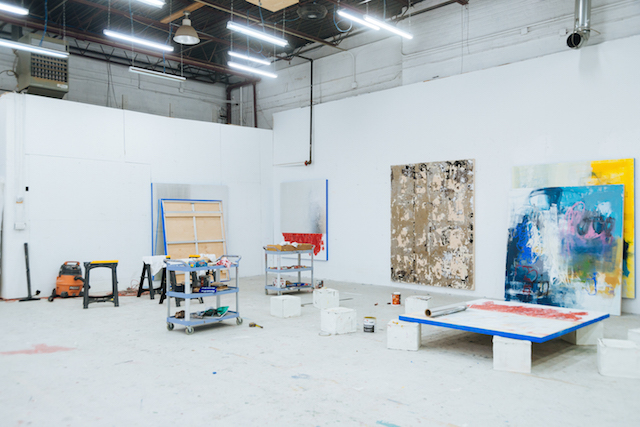
The Bushwick studio looks like an abandoned warehouse, but with white walls and bright sunlight. It does not feel industrially detached: there’s a motorcycle parked in the very back, and an adorable painting by 8-year-old McCloud made hangs above his desk—it depicts a gentle bird, which is decidedly unlike his current work.
Videos by VICE
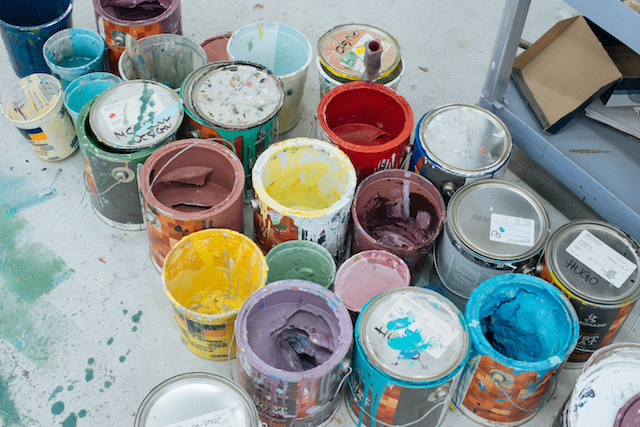
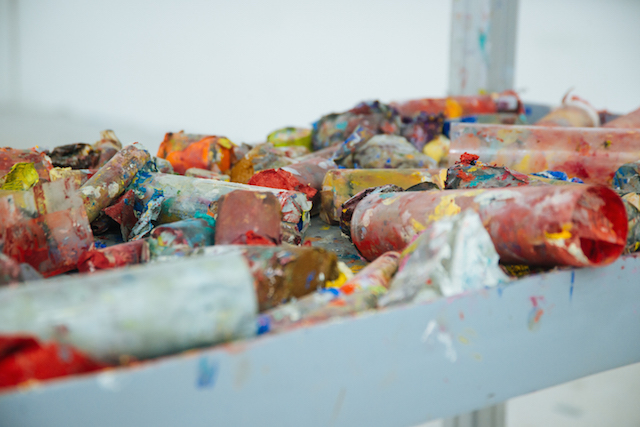
Paint splatters blanket everything here. Even McCloud’s MacBook is covered in colorful paint splatters. He recently riffed on that charm while collaborating with Brother Vellies and Ryan Roche on a collection of suffragette-inspired sweaters that benefitted the Women’s March—the artist wore the knits around his studio, letting paint rub off them.
The contrasts between the loud, intense process of his work, the buzzing, humming, and clanking, and the resultant pieces, is surprising. His all-white and all-gold works evoke luxe Baroque prints, transporting the viewer far from the artist’s utilitarian space and into their grandiose and dramatic patterns.
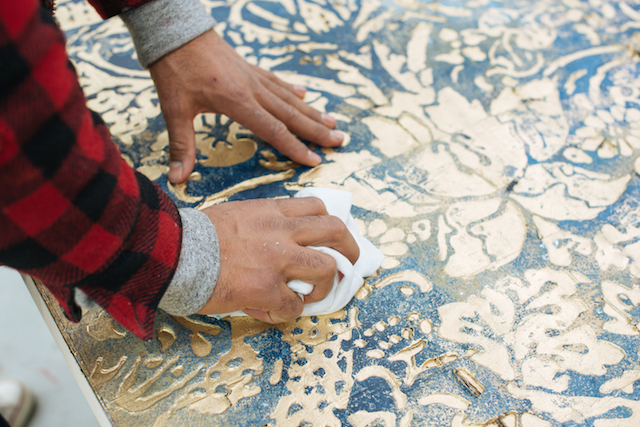
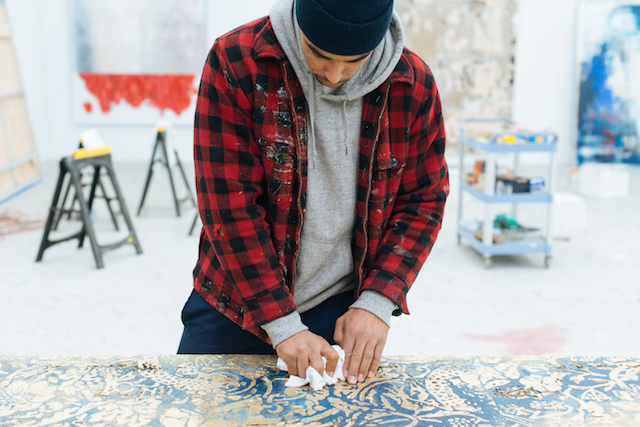
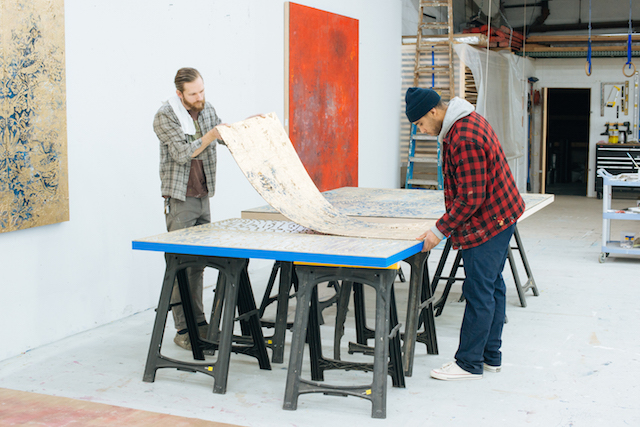
McCloud’s mysterious “veiled” pieces, presented at Sean Kelly gallery this month, are both poetic and pragmatic, one-half painted, the other half wrapped in aluminium foil. To McCloud, the appeal of veiling is partially in embracing the experiment. He always paints the entire canvas before covering one half in aluminium foil, building a sense of intrigue around the hidden portion.
During exhibitions, these veiled works in particular entice gallery visitors. At one of McCloud’s book signing events, I observed people first approaching the paintings to see what’s hiding behind the foil, then, catching their own reflections, stepping back to gaze into that incidental mirror.
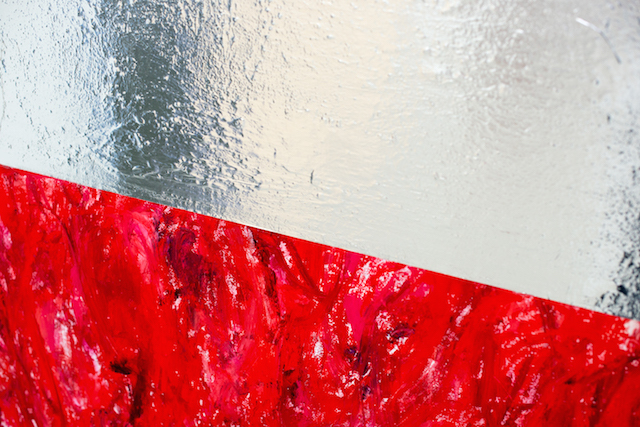
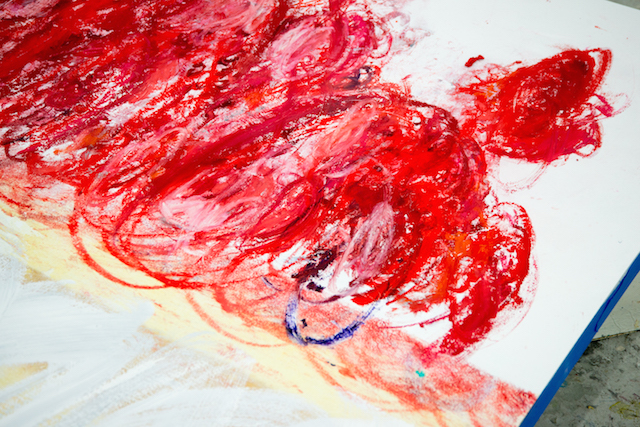
McCloud says that it’s important to him to embrace the mistakes and imperfections in his process. During his first experiments with foil, he was enchanted by how glassy the unblemished foil surface was. But in the veiling process, the perfect smoothness was destroyed, and leaving texture in its wake.
“In these moments, you have to stop and reevaluate,” McCloud says. “Sometimes you have to realize that you intended to do something impossible. You have to shift your attention and focus on what’s actually possible.”
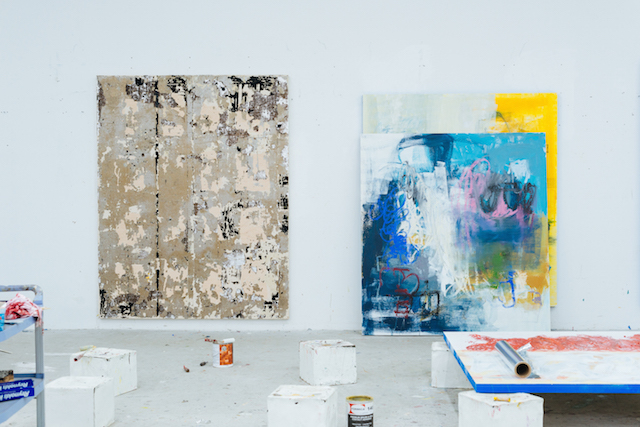
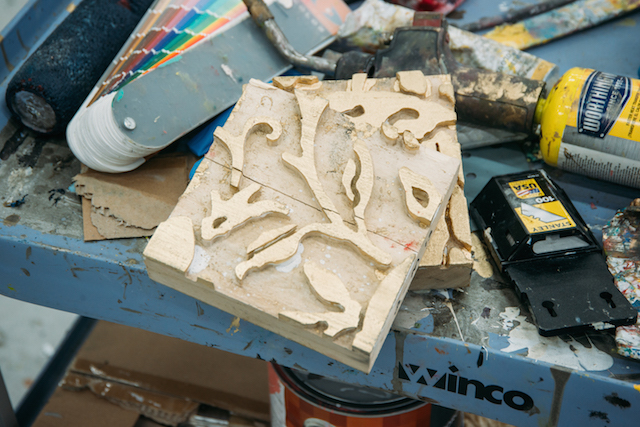
He presses his hand against the foil to show me that damage is just one touch away. McCloud then eliminates the lingering and distracting marks by embracing the subtly crinkled effect throughout the work—the paint underneath allows the artist to “make a few more mistakes.”
McCloud is continually experimenting. He dislikes repeating the same process over and over, so each piece changes as he works on it. This is one of the reasons why he doesn’t use assistants in his creative process—it’s impossible to direct someone’s improvisation.

“As an artist, you should never settle with just one thing,” McCloud says as we walk toward his more recent work, which will be exhibited at the Armory Show in March. “I constantly ask myself: How can I keep pushing? What’s the next thing?” In his new work, he clearly used a paintbrush, and the veil has taken a new form—projecting the cutout shape over the foil, McCloud hand-cut a serpentine pattern to eclipse the painting.
Like other creatives, McCloud is afflicted by wanderlust. He is known to spend many weeks traveling and, in fact, left New York shortly after my studio visit. He does not, however, bring back cheesy memorabilia. Instead, after a previous trip, he brought back the hanging woven sacks he’d later use in his work by the hundreds.
As we wrap up the tour, we talk about the everyday struggles of being creative. “There are battles and hurdles within each artist,” he says. “I am interested in the balance between perfection and imperfection. I want to let irregularities coexist with refinement.”
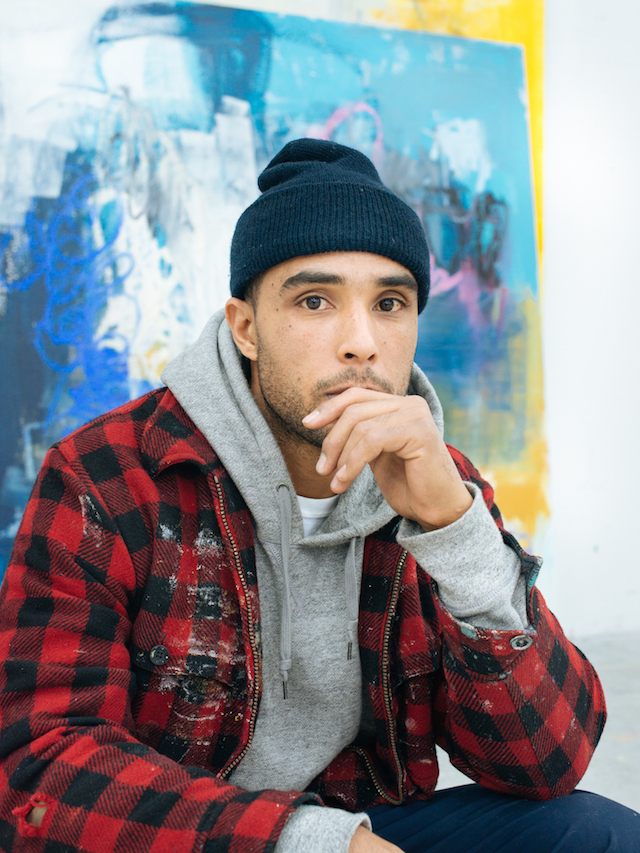
Click here to see more works from Hugo McCloud.
Related:
Misha Kahn’s Maximalism in the Age of Restraint | Studio Visits





